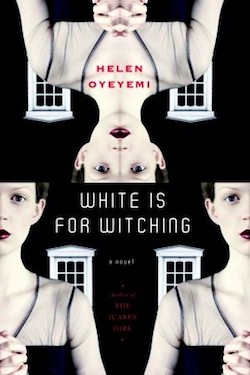Hi, lovelies. Here’s my month in books, movies, television, games, and podcasts.
Books
 The Only Good Indians by Stephen Graham Jones is a dark tale of revenge, in which four American Indian men find themselves facing the consequences for their actions as youths. One by one, they are slowly hunted down by a strange entity, bent on making them pay. Beautifully written and shockingly gory, the story unfolds shifts between each of their points of views. The Only Good Indians blends intense action with sharp social commentary, presenting a book with a powerful and moving conclusion. The evolution of this story provided a number of surprises and ultimately left me in tears by the end. Fantastic.
The Only Good Indians by Stephen Graham Jones is a dark tale of revenge, in which four American Indian men find themselves facing the consequences for their actions as youths. One by one, they are slowly hunted down by a strange entity, bent on making them pay. Beautifully written and shockingly gory, the story unfolds shifts between each of their points of views. The Only Good Indians blends intense action with sharp social commentary, presenting a book with a powerful and moving conclusion. The evolution of this story provided a number of surprises and ultimately left me in tears by the end. Fantastic.
From the Standard Cyclopedia of Recipes: Adapted Poems by B.C. Edwards is a collection of poetry that feels like medicinal show, poems acting as instructions for cures, cleaning products, fixtures, elixirs, and poisons. I thoroughly enjoyed it.

 What should be no surprise to anyone who reads my blog at this point is that I love Junji Ito — a writer and artist who continues to prove himself a master of the horror genre with his graphic novel, No Longer Human. The story follows the life of a man who feels disconnected with humanity to the extent that he finds it incredibly anxiety inducing — and at times outright horrifying — to interact with other people My full review is
What should be no surprise to anyone who reads my blog at this point is that I love Junji Ito — a writer and artist who continues to prove himself a master of the horror genre with his graphic novel, No Longer Human. The story follows the life of a man who feels disconnected with humanity to the extent that he finds it incredibly anxiety inducing — and at times outright horrifying — to interact with other people My full review is  After watching Hellier, I’ve taken an interest in the idea of synchronicity (or meaningful coincidences), which is often discussed on the show. Carl Jungthe concept in his paper, Synchronicity: An Acausal Connection. The paper presents his theories on synchronicity, which he ties to psychology, psychic phenomena, quantum mechanics, and and the collective unconscious. For Jung, synchronicity was a defining principle of nature as valid as space, time, and causality. It makes for a fascinating read, even if some of the technical aspects of the paper were a bit hard to follow. I found it so interesting that I put together a
After watching Hellier, I’ve taken an interest in the idea of synchronicity (or meaningful coincidences), which is often discussed on the show. Carl Jungthe concept in his paper, Synchronicity: An Acausal Connection. The paper presents his theories on synchronicity, which he ties to psychology, psychic phenomena, quantum mechanics, and and the collective unconscious. For Jung, synchronicity was a defining principle of nature as valid as space, time, and causality. It makes for a fascinating read, even if some of the technical aspects of the paper were a bit hard to follow. I found it so interesting that I put together a  The Good House by Tananarive Due is an utterly fantastic horror novel. Angela Toussant inherited the Good House from her grandmother, a woman well known in the small Sacajawea, Washington, community for her “healing magic.” When Angela returns with her son for summer vacation, she hopes to draw on some of that magic to heal her broken marriage. Instead, a surprising and violent tragedy strikes, driving her into a deep depression. Years later, she returns with the aim of healing her own emotional wounds, only to instead begin to notice a pattern of tragedies that may all be connected to something restless living within her old family property.
The Good House by Tananarive Due is an utterly fantastic horror novel. Angela Toussant inherited the Good House from her grandmother, a woman well known in the small Sacajawea, Washington, community for her “healing magic.” When Angela returns with her son for summer vacation, she hopes to draw on some of that magic to heal her broken marriage. Instead, a surprising and violent tragedy strikes, driving her into a deep depression. Years later, she returns with the aim of healing her own emotional wounds, only to instead begin to notice a pattern of tragedies that may all be connected to something restless living within her old family property.
 Neil Gaiman’s The Sandman is one of my all-time favorite comic book series. When I learned that the characters would live on through stories told by different authors, I was both excited and wary. However, with Nalo Hopkinson (who is known for putting a Carribean spin on fantasy and horror), I knew the story would be in good hands. Her take, The House of Whispers is phenomenal, with gorgeous illustrations by DOMO.
Neil Gaiman’s The Sandman is one of my all-time favorite comic book series. When I learned that the characters would live on through stories told by different authors, I was both excited and wary. However, with Nalo Hopkinson (who is known for putting a Carribean spin on fantasy and horror), I knew the story would be in good hands. Her take, The House of Whispers is phenomenal, with gorgeous illustrations by DOMO. Helen Oyeyemi’s White is for Witching is the story of the Silver family and their house in Dover, England, which has converted to a bed-and-breakfast. The house, however, has a will of its own — and though it loves the women of the family, it has a malice for strangers.
Helen Oyeyemi’s White is for Witching is the story of the Silver family and their house in Dover, England, which has converted to a bed-and-breakfast. The house, however, has a will of its own — and though it loves the women of the family, it has a malice for strangers.